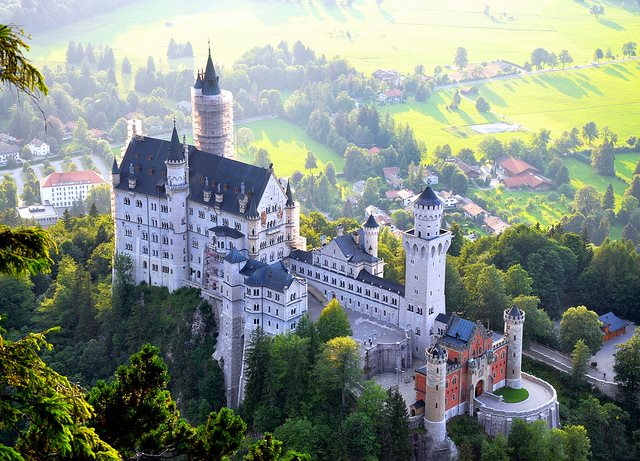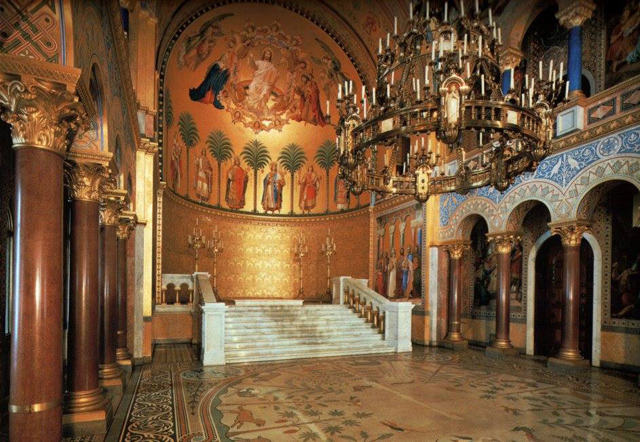Neuschwanstein of Germany

Neuschwanstein Castle is located in the village of Schwangau, near the town of Füssen, Bavaria, southern Germany, built-in 1869 at the request of the "crazy king" Ludwig II, a rare strange character in the history of the monarchy of the country. This is the last castle built and lived by King Ludwig II.
Neuschwanstein means "New Stone Swan", derived from a knight character "Swan Knight" in the famous musical by composer and conductor Richard Wagner. The castle is an artistic masterpiece that harmoniously combines many architectures, with Roman arched windows, Gothic pinnacles, Byzantine decoration of gold and marble evoking a poetic and splendid beauty.
Surrounding the castle is a granite wall, inside is a limestone brick wall, creating a solid and sustainable position for the castle against time and the erosion of nature. Inside the castle, the interior is sophisticatedly designed with unique paintings and elegant colors. Because the genius playwright Richard Wagner was also a close friend, King Ludwig had many scenes from his musicals painted on tapestries and murals. The castle was equipped with the most advanced technology of the time such as a battery-operated servant bell, central heating system, water heater, and automatic flushing toilet.
This castle is the model for the castles in Disneyland and has appeared in many fairy tales because, in the early morning, the thin mist surrounds the castle, if looking back from far can only see the pointed watchtowers hidden in the clouds. Standing on the balcony of the castle, looking out into the distance to enjoy the panoramic view of the Schwangau steppe of the majestic Bavarian region, Alpine and Schwansee lakes lie side by side. In the distance are the Tyrolean Mountains that divide Germany and Austria.
After 17 years of construction until the death of King Lugwig II, he only stayed in the castle for only 172 days. After the king's death, the square tower and knight's house were completed in a simpler way, and the chapel was not built as originally planned. King Ludwig II was known as a "crazy king", he would rather destroy the castle than let the common people visit because that would lose its legendary character. But just six weeks after his death, the castle opened to visitors. Today, tourists only visit mainly 6 private rooms of the king and 2 main halls.











